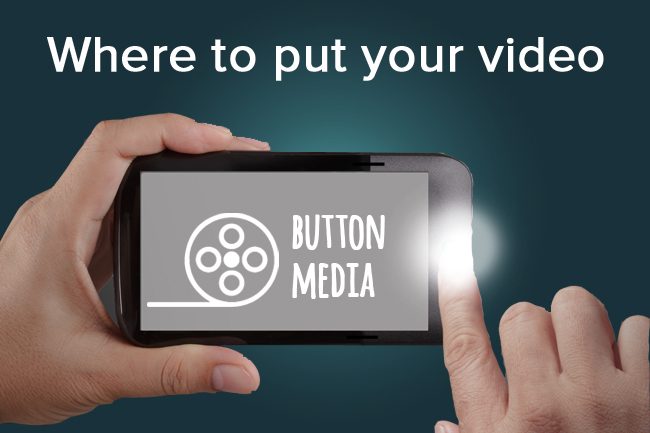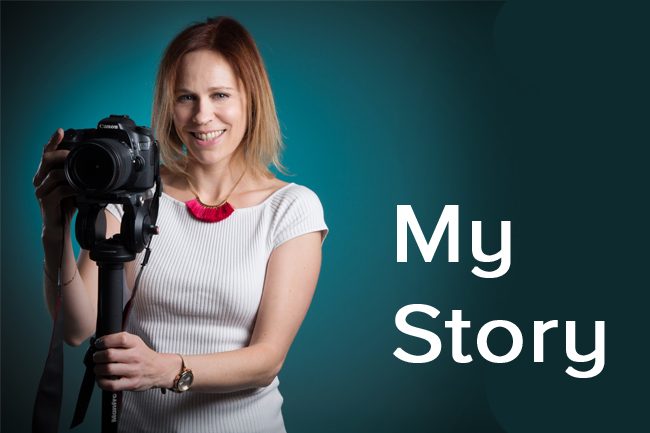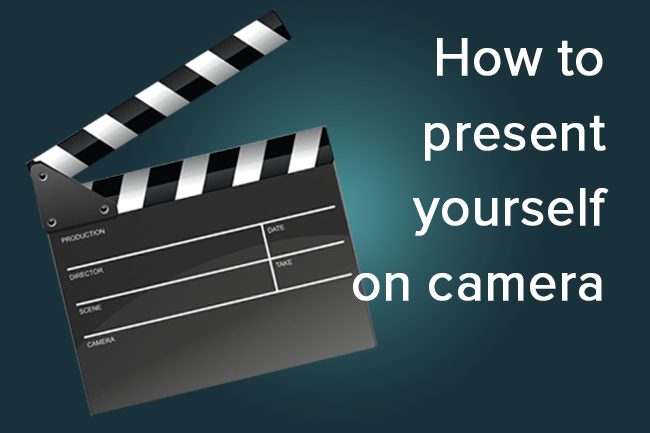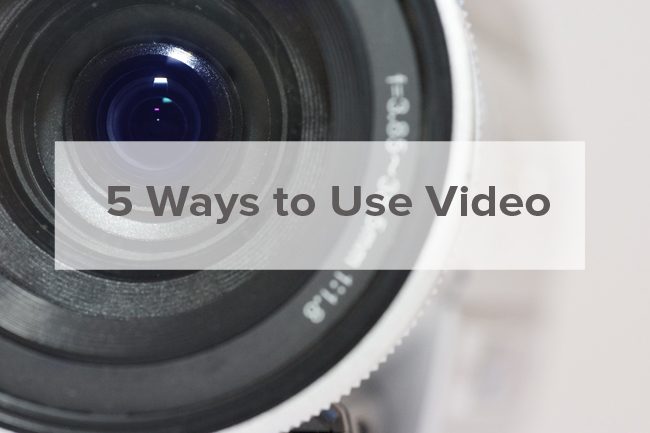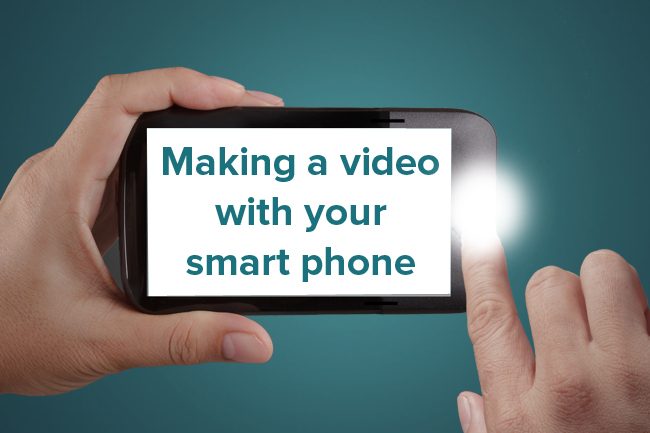You’ve invested lots in your company video so now you need to make sure it gets as many views as possible and achieves what you want it to. So make sure you put it in the right place on your website. The video below tells you what you need to know…
Category: Client Resources
My Story
I’ve always been a story teller. People fascinate me. I’m inspired by the way that circumstances unfold in people’s lives, how they grow through them and what motivates them now. Everyone has a tale to tell and it seems appropriate to share my own story with you. So here it is.
My Sliding Doors moment happened in 2000. I had just moved to Canada and was applying for jobs. One day, I went out in the snow to deliver CVs for three positions:
- One in teaching (I’m a trained teacher)
- One in publishing (I’ve also worked as an editor)
- And one in TV (I’d volunteered at a TV company just before leaving the UK)
As you may have guessed, I got the TV job. It was with New Scotland Pictures, a company that made music television specials and music videos. For the next two years, I worked at everything from writing scripts to floor managing to getting funding for projects. I even made my own kids’ TV show.
When I got back to the UK, I continued to build on my experience, working as a production coordinator and manager in Bristol for organisations like BBC, ITV, Icon Films and Fluidity Films.
And then in 2013 I took the leap and set up as a film maker in my own right.
HOW BUTTON MEDIA WORKS
Today I work with organisations ranging from charities to international financial institutions – basically anyone with a big personality, a love of people, and a message they want to communicate to the world.
With Button Media you get a full service package, from concept and scripting through shooting to the final edit and rendering process.
Most of the films I work on are interview based, allowing me to draw out people’s stories and present them in a way that really reflects who and what they are. It’s about getting you to open up and talk authentically, finding out what’s really in your head and heart. Because that’s the kind of connection that will really speak to your customers and clients.
So that’s me. If you’re interested in talking about how film can help you and your organisation, get in touch today for a chat.
Presenting Yourself on Camera
One thing that puts a lot of people off making a video is the thought of speaking on camera – it seems like such a huge effort. And what if you stumble, or forget what you’re going to say? Not everyone’s a natural. So here are some tips to get you looking your best and for helping you communicate your message effectively.
1. Getting the words right.
If you can remember the main points in your head you will sound natural and relaxed. Some people are really good at this and are used to it. This style works well for blogs.
If you can’t hold all the main points in your head one thing you can do is speak in small chunks and edit them together later. Look at your notes, remember a paragraph, talk to the camera. Make sure though, that you leave a gap between looking down at your notes and looking up at the camera so that the editing can be done cleanly.
What does not work is having a piece of paper/laptop beside the camera. You need to keep your eyes steadily looking into the lens otherwise you’ll look shifty!
The other option is to use an auto cue (also known as a teleprompter). It makes the whole operation more slick and makes sure you cover everything. BUT… make sure you don’t sound like you’re reading off a script. Make it sound as natural as possible.
Whether you use an auto cue or not, practice what you’re going to say as many times as possible before you turn the camera on. Practice makes perfect.
And remember if you make a mistake, you can always retake. Stay calm.
2. Be enthusiastic
You want your audience to like you and what you have to offer, right? So look happy. Enthusiasm is infectious so if you are enthusiastic about your services viewers will be too. A smile goes a long way.
3. Be Youself
You don’t need to put on a whole different personality. If you’re not genuine people will spot it a mile off. Show people that you are normal and they will respond. People like to work with others who are sincere. And don’t be afraid to show a bit of humour.
4. Imagine you are speaking to just one person. While you’re being videoed don’t think about the thousands of people who might eventually see this. Viewers will probably be watching the video on their own anyway so picture them and talk as if you are having a coffee with a friend, one to one. This will help you relax and come across as more friendly.
5. Give it a go
Once you get going you will relax into it. And the more videos you make the better you will become at doing it.
Feeling more confident? If you have any other tips for speaking on camera please share them in the comments box. And if you need help with videos just get in touch.
What to say in your video
What to Say in Your Video
Hi, are you are planning to make video but are not sure what to say? Don’t panic. Here some pointers to help get you going.
1. First of all, what is the purpose of your video? Is it to raise awareness of your business -is this the first introduction to your business to people who don’t know anything about it yet? Or is if for people who are aware of your services already and are considering buying from you? Are you aiming to build trust and confidence in you and your services?
Once you are clear on who your video is for, you will have a better idea of how to address them. Keep your target audience in mind as you plan so that you keep the language and the message appropriate.
2. What is your key message or theme? Keep it simple – one message is probably enough. Be clear on what it is you want to communicate. Is it possible to break your message down into sections? As you plan, use bullet points and stick to a few subheadings. This will help your audience remember what you say more easily and refer to it later.
3. Structure your video. For a video to engage interest and keep viewers watching you need some sort of emotional hook right at the beginning. Don’t launch in with lots of factual information about you or your business or people will switch off. Viewers need a reason to watch. They need to be interested on an emotional level. There are lots of ways to achieve this, for example, through humour, intrigue, tug at the heart strings, or even shock! A good way to get viewers interested is to describe a problem that viewers may be experiencing.
Once you have the viewers attention you can give them more info about how you can help but keep the info bit interesting, relevant and brief.
At the end you need another emotional trigger to spur the viewer into action – to respond to your video in some way, whether leaving a comment, finding out more information or making a booking. Again, give viewers an incentive to respond.
Once you have an audience in mind, a clear message and a structure you’re ready to write your script. Just to let you know, one A4 page of type, double line spaced works out at about a minute.
4. Review your plan and hone it. Run it by your colleagues or other people who understand your business and your target audience. There are lots of copywriters about who can cast a professional eye over it and that may be worth considering. It’s worth spending time on getting the script just right so that you get a good response to the video.
The next stage is to deliver your script. Nervous? Click here for some tips on how to present yourself on camera.
In the mean time, get creative and let me know how you get on by leaving comments in the box below. If you need help with videos do get in touch.
5 Ways To Use Video
So you’re going to make a video. But what are you going to put into it? Well, here are some ideas.
1. Introduce Your Business
A friendly face will help people to connect with you and your business in a more personal way. Get enthusiastic and be real. Potential customers need to know you are approachable and friendly. Making a personal connection will show that you care and will help you build rapport.
2. Show off your product or service
If you don’t want to be on screen yourself you could put together a slideshow of images of your products and include voice-over. This might be particularly useful if you sell visually beautiful things like jewellery. You can really show off the details and benefits of what you sell in a way that text can’t. How about an event video? You could capture the atmosphere of the event by showing clips of what’s going on and on video and put it to music.
2. Client Testimonials
We’re more likely to buy a product or service if it’s recommended to us by someone else. Clients want to know what kind of experience they might expect from your business and recommendations from other customers will add huge credibility to your business.
3. FAQs
Use videos to answer questions that people often ask about your product or service. Not only will your customers receive clear information but it will help them realise that you care about their concerns and are willing to respond personally.
4. Give Tips
Show yourself to be an expert in your field. Build an audience who respects your work. Be the one that people turn to, to find out about your area of expertise. Put yourself out there and watch your audience grow.
So here are some ideas to get you started. It’s worth planning your video carefully and if you’d like some tips on how to script what you’re going to say look out for my next video blog. Have fun and let me know how you get on by leaving comments in the box below. If you need help with videos please get in touch.
How to Make a Video with your Smart Phone
So you’re going to make a video to post on social media? Good decision. Video attracts more attention than text and stills so be brave and put yourself out there! You haven’t got the budget to get a production company in? Don’t panic. You can still make it work using your smart phone and get a great response. Here’s what you need to know.
1. Be clear on your message
Having good content is the most important thing. Why do we watch the videos we watch? Because they entertain or offer us valuable info. If the content is interesting, relevant and useful I for one will watch it, even if production quality isn’t completely up to scratch. One key message per video is usually best but you could offer 3 or 5 bullet points. Plan what you’re going to say and have a clear structure in your head. Keep it short – no more than 3 minutes.
2. You need good quality audio
Record audio separately if possible using a digital recorder and synch it up later when you edit. If this isn’t possible make sure there isn’t a lorry driving past, phones ringing or other distracting background noise. Hold the microphone as close to you as possible. People won’t watch your video if they can’t make out what you’re saying.
3. Stabilisation
It makes a huge difference if the camera is steady. You can get tripods, mounts and stands quite cheaply. Try Amazon.
4. Get the lighting right
Outdoors light works well if it isn’t too noisy. If you’re indoors stand/sit by the window with the light on your face so you don’t get shadows. Put the lights on and get an extra lamp if you need it.
5. Think about what’s in the background
What kind of look do you want to portray? Corporate? An office setting might work. Dress smart to match your environment and give the right impression. Or are you going for a more relaxed feel? Sit in a comfy chair or at the kitchen table with a mug of coffee in your hand. Avoid capturing logos in your shot – you don’t want to get into copyright trouble. Same thing goes for art work, photos, sculptures, etc.
6. Edit
Your smart phone gallery will have options to trim the video. There are all sorts of editing apps available to download which will help you add effects, titles, captions and music. Alternatively you could transfer your video file to your computer (via Dropbox or Google Plus, for example) and edit from there. PCs have Movie Maker and Macs give you iMovie.
Just a note on adding music – it’s worth putting some in the background. It keeps the video flowing and adds interest. But you’ve got to get the right piece that fits with your message. Choose from royalty free library music rather than commercial music which is complicated and expensive to clear. Editing programmes sometimes have some tracks you can or you can download stock audio online. Prices vary.
Create your own YouTube channel and upload your video. From there you can share your video on Facebook, Linkedin, Twitter or whatever social media platform you are using. Invite comments and see what response you get. See what works and go from there.
Have fun and get creative and for more tips on making videos have a look at our other blogs.

